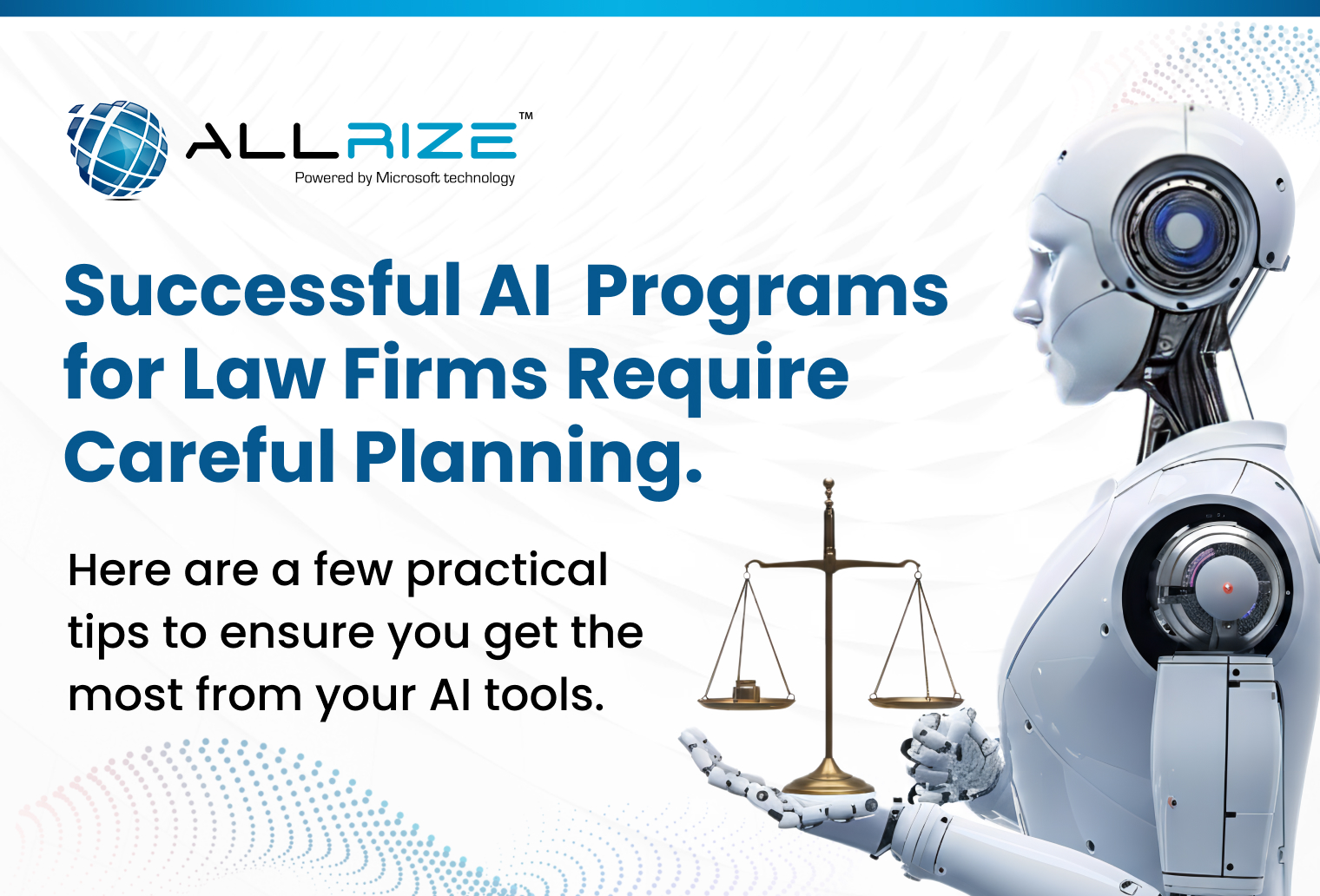A new report from MIT reveals bleak results about the success of deploying AI tools and projects: 95% of efforts fail. While the report was conducted through interviews primarily in business organizations, the legal industry was also represented in the report.
Many AI tools are expensive and time consuming to implement. Here are a few practical tips to ensure you get the most of your AI investment:
1. Define the Business Problem Before the Tool
Too often, firms start with the question: “Which AI tool should we try?” A better question is: “What are some important operational problems we could solve with AI?” If you jump straight into a tool, you risk using AI for novelty instead of impact. Once you have a clear problem, find an AI solution that directly addresses it. That alignment is what makes a pilot relevant and measurable.
2. Get Stakeholder Buy-In Early
AI tools and projects touch more than just the tech team. Attorneys, paralegals, administrators, and sometimes even clients are impacted. If people feel blindsided, excluded, or even threatened, adoption can slow or fail. Before investing in a tool or launching a project, bring stakeholders into the conversation. Explain the business case, listen to their concerns, and clarify what success will look like.
3. Start Small, But Plan for Scale
Drastically changing processes overnight generally isn’t a recipe for success. Start small when implementing a new tool. Test with a subset of employees or deploy for a small set of tasks. However, starting small doesn’t mean you should think small. Ideally, you should have a roadmap that allows you to grow from testing tactical AI use cases to implementing more strategic AI use cases. And be prepared to tweak and optimize the plan as you learn along the way.
4. Measure What Matters
Without clear metrics, it’s impossible to prove whether a pilot worked. Projects often fizzle out because no one can determine whether or not the project made the organization more efficient, more effective, or more profitable. Establish key performance indicators at the outset and ensure all of your internal stakeholders are dedicated to tracking and measuring. For law firms, indicators could be things like reduced turnaround time on cases, an increase in billable hours, or improved client satisfaction scores. At the end of a pilot, you should be able to easily determine whether your project was a success or not.
5. Don’t Forget About Ethics and Compliance
Nothing can stop an AI project faster than an ethics violation or compliance lapse. Lawyers have unique ethical duties, and AI introduces new compliance risks. Issues like client confidentiality, bias, and unauthorized practice of law are real threats if not addressed upfront. Before implementing any AI tool, draft an internal AI use policy that outlines acceptable and unacceptable use cases. You should also have processes in place to ensure that attorneys have proper oversight of AI-generated material and remain the final decision-makers.
6. Partner with the Right Vendor
Not all AI vendors understand the legal industry. A tool that looks impressive in a demo may fall flat in practice if it doesn’t integrate with your existing workflows and systems or respect your compliance needs. When searching for a partner, ask vendors for real-world examples of success in law firms like yours.
Final Thoughts
As the research now demonstrates, AI isn’t a magic switch, it’s a tool that can transform your firm if implemented and managed with care. Most firms that fail skip these important steps. Don’t be one of them. With the right planning and execution, your next AI pilot could be the competitive advantage that sets your firm apart.

